Scotts S2546 User Manual

K9
Lawn Tractor
S2546
OPERATOR’S MANUAL
яюэюьыъщшъюьючц
Manufactured by John Deere D
OMGX10722 K9
North American
Litho in U.S.A.
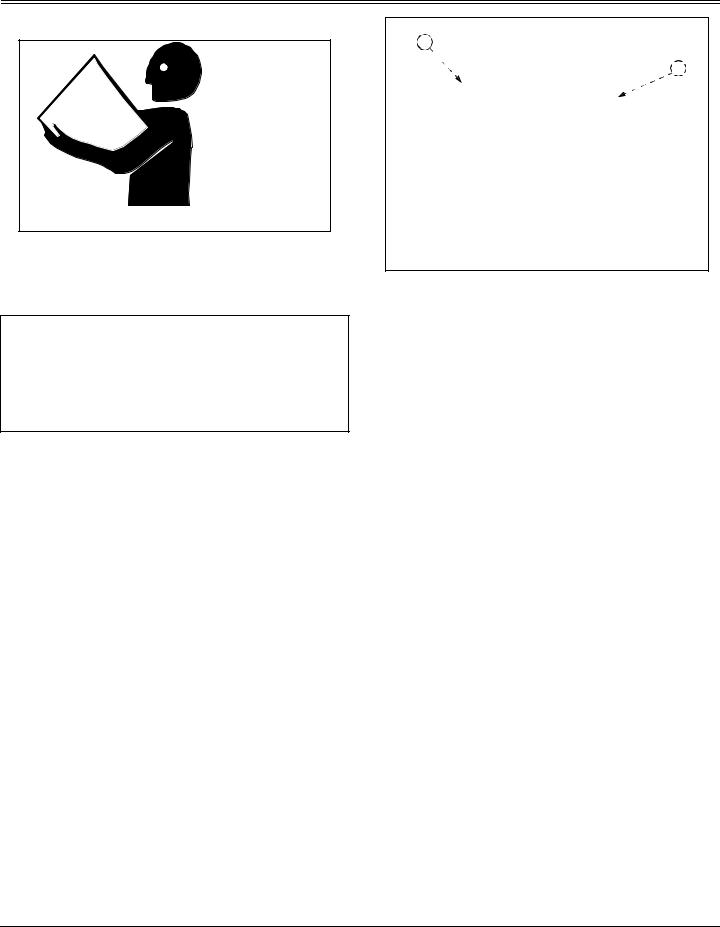
INTRODUCTION
THANK YOU for purchasing a Scotts product.
Read this manual and your attachment manual thoroughly. Failure to do so could result in personal injury or equipment damage.
cfrom this product contains chemicals known to the State of California to
cause cancer, birth defects or other reproductive harm.WARNING: The Engine Exhaust
CALIFORNIA Proposition 65 Warning
This manual should be considered a permanent part of your machine and should remain with the machine when you sell it.
Product warranty is provided as part of John Deere’s support program for customers who operate and maintain their equipment as described in this manual. The product warranty is explained on the warranty certificate you received from your dealer.
Measurements in this manual are metric units and their U.S. customary equivalents. RIGHT-HAND and LEFTHAND sides are determined by facing in the direction the machine will travel when going forward. When you see a broken line arrow (------>), it indicates the part it is pointing to is hidden.
Record identification numbers below. Be sure to record all the numbers to help in tracing the machine if it is stolen. You also need to give these numbers to your dealer when you order parts.
B
A
DATE OF PURCHASE:
_______________________________
DEALER NAME:
____________________________________
DEALER PHONE:
___________________________________
TRACTOR SERIAL NUMBER (A), (Under seat):
__ __ __ __ __ __ __ __ __ __ __ __ __
ENGINE SERIAL NUMBER (B), (Right side of engine):
__ __ __ __ __ __ __ __ __ __ __ __ __
Introduction

|
TABLE OF CONTENTS |
Contents |
|
Assembly ............................................................................................................................................... |
1 |
Safety Signs........................................................................................................................................... |
3 |
Controls ................................................................................................................................................. |
5 |
Operating Machine ................................................................................................................................ |
6 |
Operating Mower ................................................................................................................................. |
16 |
Replacement Parts ............................................................................................................................. |
20 |
Service Machine Safely ....................................................................................................................... |
21 |
Service Interval Chart.......................................................................................................................... |
22 |
Service Engine .................................................................................................................................... |
24 |
Service Steering and Brakes ............................................................................................................... |
29 |
Service Mower..................................................................................................................................... |
31 |
Service Electrical ................................................................................................................................. |
36 |
Service Miscellaneous......................................................................................................................... |
40 |
Removing Mower................................................................................................................................. |
44 |
Installing Mower................................................................................................................................... |
45 |
Troubleshooting .................................................................................................................................. |
47 |
Storing Machine................................................................................................................................... |
51 |
Specifications....................................................................................................................................... |
53 |
Warranty .............................................................................................................................................. |
55 |
Index .................................................................................................................................................... |
59 |
Service Literature ............................................................................................................................... |
61 |
All information, illustrations and specifications in this manual are based on the latest information at the time of publication. The right is reserved to make changes at any time without notice.
COPYRIGHT© 1999
Deere & Co.
John Deere Worldwide Commercial and
Consumer Equipment Division
Horicon, WI
All rights reserved
OMGX10722 K9
Table of Contents
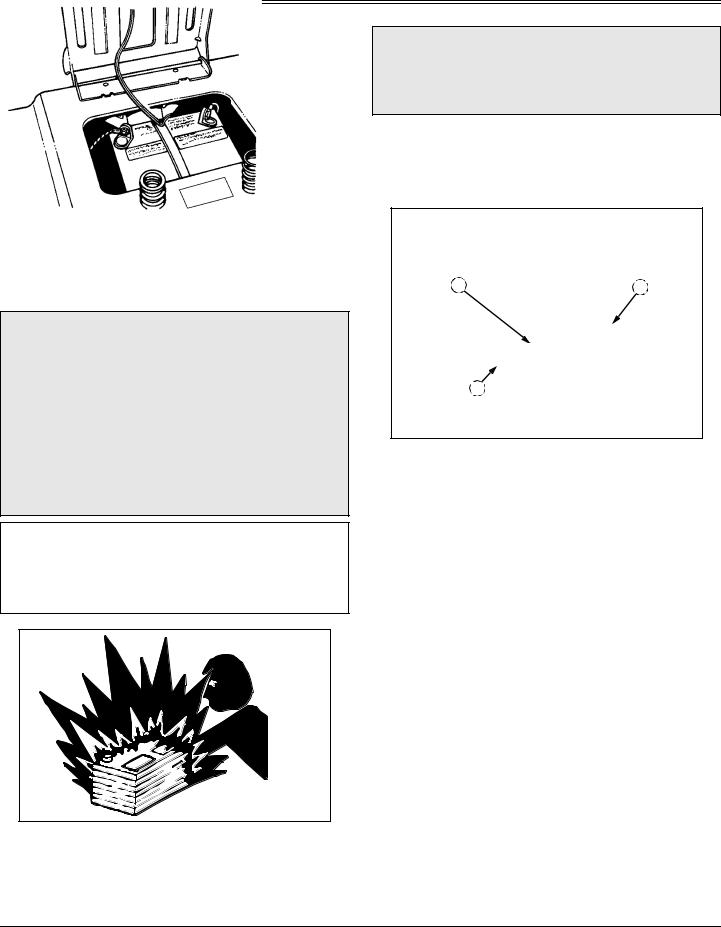
ASSEMBLY
Identify Parts
AOperator’s Manual
BSafety Video
CBag of Hardware
DKey
Bag of Hardware:
•2 - M8x16 Bolts - Battery
•2 - M8x16 Nuts - Battery
Connect and Check Battery
cCAUTION: Avoid injury. Prevent Battery Explosions:
-Keep sparks, lighted matches, and open flame away from the top of battery. Battery gas can explode.
-Never check battery charge by placing a metal object across the posts. Use a volt-meter or hydrometer.
-Do not charge a frozen battery; it may explode. Warm battery to 16° C (60° F)
IMPORTANT: Avoid machine damage. This battery comes fully charged. If the mower is not used by the Service Expiration Date indicated on the battery, charge the battery. (See Charging the Battery in the Service - Electrical section.)
cCAUTION: Avoid injury. DO NOT attempt to open, add fluid or service battery. Any attempt to do so will void warranty and lead to possible injury.
NOTE: Do not remove the BLACK negative (–) protective cap at this time.
1. Remove and discard the RED positive (+) protective cap from the positive (+) battery terminal.
C A
B
2.Connect RED positive (+) cable (A) to battery with 6mm hex head bolt and 6 mm flange nut. Tighten securely. Apply petroleum jelly or silicone spray to terminal to prevent corrosion. Install the red terminal cover.
3.Remove and discard the BLACK (–) protective cap from the negative battery terminal.
4.Connect silver braided grounding cable (B) to the negative (–) terminal (C) with remaining 6 mm hex head bolt and 6 mm flange nut and tighten securely. Apply petroleum jelly or silicone spray to terminal to prevent corrosion.
Assembly - Page 1

ASSEMBLY
Checking Tire Pressure
cCAUTION: Avoid injury. Explosive separation of a tire and rim parts can cause serious injury or death:
-Do not attempt to mount a tire without the proper equipment and experience to perform the job.
-Always maintain the correct tire pressure. Do not inflate the tires above the recommended pressure. Never weld or heat a wheel and tire assembly. The heat can cause an increase in air pressure resulting in a tire explosion. Welding can structurally weaken or deform the wheel.
-When inflating tires, use a clip-on chuck and extension hose long enough to allow you to stand to one side and NOT in front of or over the tire assembly.
-Check tires for low pressure, cuts, bubbles, damaged rims or missing lug bolts and nuts.
1.Check tires for damage.
2.Check tire pressure with an accurate gauge.
3.Add or remove air, if necessary:
Tire Size |
Pressure-kPa (psi) |
|
|
|
|
Front: 15-Inch |
97 kPa (14 psi) |
|
|
Rear: 20-Inch |
69 kPa (10 psi) |
|
|
Assembly - Page 2

SAFETY SIGNS
Safety-Alert Symbol
Read and recognize safety information. Be alert to the potential for personal injury when you see this safety-alert symbol.
On your machine safety labels, the words DANGER, WARNING, and CAUTION are used with this safety-alert symbol. DANGER identifies the most serious hazards.
In this manual, the word CAUTION and this symbol call attention to safety messages.
Certification
Your mower has been certified by an independent laboratory for compliance with American National Standard B-71.1, “Safety Specifications” for Power Lawn Mowers, Lawn and Garden Tractors, and Lawn Tractors.
Machine Safety Labels
DANGER
AVOID SERIOUS INJURY OR DEATH
M96445
•Do not mow when children or others are around
•Do not mow in reverse
•Look down and behind before and while backing
•Never carry children
WARNING
AVOID SERIOUS INJURY OR DEATH
•Drive up and down slopes, not across
•Avoid sudden turns
•If machine stops going uphill, stop blade and back down slowly
•Keep safety devices (guards, shields, and switches) in place and working
•Read operator’s manual
•When leaving machine:
–Stop engine –Set park brake –Remove key
DANGER/POISON
SHIELD EYES.
EXPLOSIVE GASES CAN CAUSE BLINDNESS OR INJURY.
NO
•SPARKS
•FLAMES
•SMOKING
SULFURIC ACID CAN CAUSE BLINDNESS OR SEVERE BURNS
FLUSH EYES IMMEDIATELY WITH WATER.
GET MEDICAL HELP FAST.
MAINTENANCE-FREE
KEEP OUT OF THE REACH OF CHILDREN. DO NOT TIP. DO NOT OPEN BATTERY!
Safety Signs - Page 3
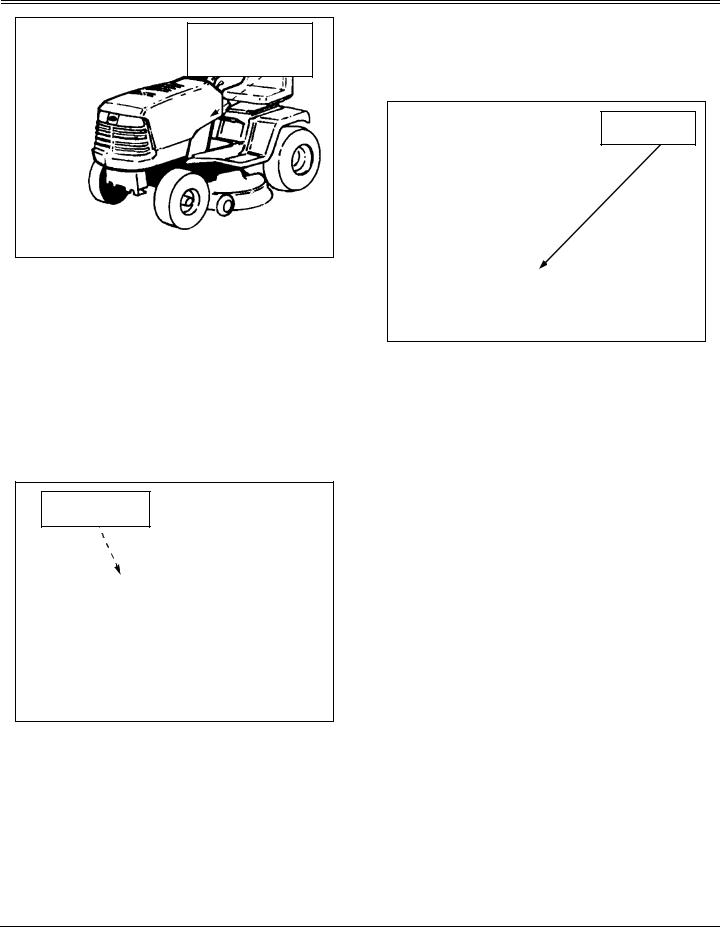
SAFETY SIGNS
M96445
Picture Note: Located on Battery under seat
DANGER
ROTATING BLADE
DO NOT PUT HANDS OR FEET UNDER OR INTO MOWER WHEN ENGINE IS RUNNING
THROWN OBJECTS
BEFORE MOWING, CLEAR AREA OF OBJECTS THAT MAY BE THROWN BY BLADE
DO NOT OPERATE MOWER WITHOUT DISCHARGE CHUTE OR ENTIRE GRASS CATCHER IN PLACE
M96445
Picture Note: Located on Right-Hand side of deck
DANGER
ROTATING BLADE
DO NOT PUT HANDS OR FEET UNDER OR INTO MOWER WHEN ENGINE IS RUNNING
M96445
Picture Note: Located on Left-Hand side of deck
Safety Signs - Page 4
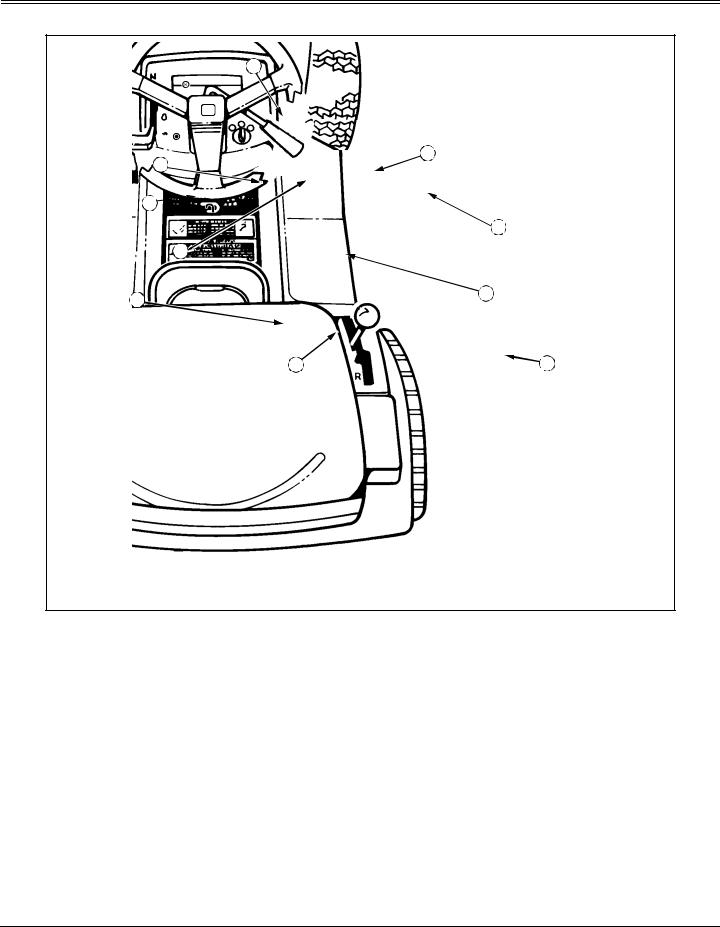
CONTROLS
Tractor Controls
J 
 I
I 
A 
B 
 H
H 
C
G 
D 
 E
E 
 F
F 
A- Throttle Control
B- Foot Pedal - Brake/Return to Neutral
C- Reverse Implement Option Switch
D- Attachment Lift Lever
E- Locking Lever
F- Transmission Shift Lever
G- Park Brake
H- PTO Drive Lever
I- Ignition Switch
J- Choke Control
Controls - Page 5
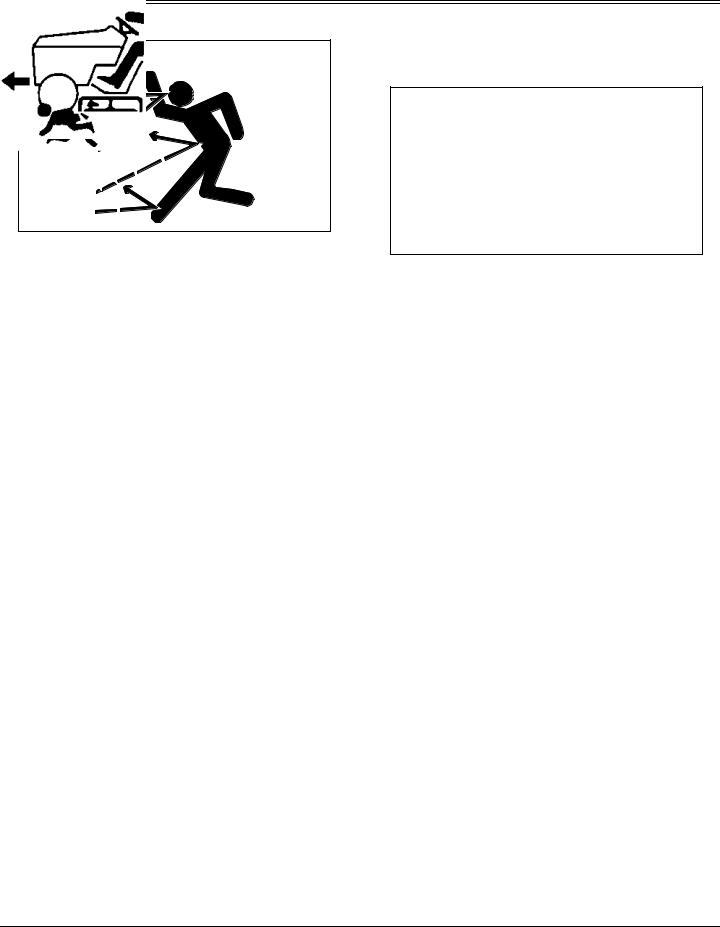
OPERATING MACHINE
Operate Safely
•In addition to reading your Operator’s Manual, view your Mowing Safety Video.
•Check brake action before you operate. Adjust or service brakes as necessary.
•Inspect machine before you operate. Be sure hardware is tight. Repair or replace damaged, badly worn, or missing parts. Be sure guards and shields are in good condition and fastened in place. Make any necessary adjustments before you operate.
•Clear work area of objects that might be thrown. Keep people and pets out of the work area. Stop machine if anyone enters the area.
•If you hit an object, stop the machine and inspect it. Make repairs before you operate. Keep machine and attachments properly maintained and in good working order.
•DO NOT leave machine unattended when it is running.
•Only operate during daylight or with good artificial light.
•Be careful of traffic when operating near or crossing roadways.
•Do not wear radio or music headphones while operating the machine. Safe operation requires your full attention.
•Older adults are involved in a large percentage of riding mower accidents involving injury. These operators should evaluate their ability to operate a mower safely enough to protect the operator and others from serious injury.
Park Safely
•Stop machine on a level surface, not on a slope.
•Disengage mower blades.
•Lower attachments to the ground.
•Engage park brake.
•STOP engine.
•Remove key.
•Before you leave the operator’s seat, wait for engine and all moving parts to STOP.
Rotating Blades are Dangerous - Protect Children and Prevent Accidents
PROTECT CHILDREN:
•Never assume that children will remain where you last saw them. Children are attracted to mowing activity, stay alert to the presence of children.
•Keep children in the house when you are operating the machine.
•Turn machine off if a child enters the mowing area.
•Use extra care when you come to blind corners, shrubs, trees, or other objects that may block your vision.
•DO NOT let children or an untrained person operate the machine.
•DO NOT carry or let children ride on machine or any attachment. DO NOT tow children in a cart or trailer.
HELP PREVENT SERIOUS OR FATAL ACCIDENTS:
•Be alert at all times, drive forward carefully. People especially children can move quickly into the mowing area before you know it.
•Back carefully. Disengage mower blades and look behind the machine carefully, especially for children, before you back up.
•DO NOT mow in reverse unless it is absolutely necessary.
•Disengage mower blades when you are not mowing.
•DO NOT operate machine if you are under the influence of drugs or alcohol.
Operating Machine - Page 6
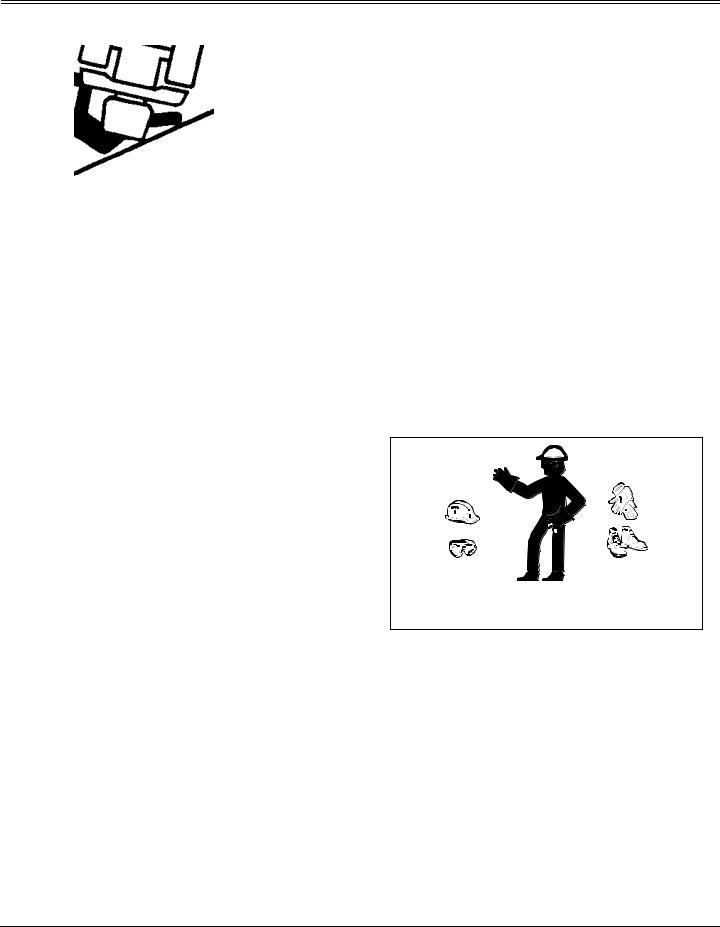
OPERATING MACHINE
Avoid Tipping |
Keep Riders Off |
||
|
|
|
|
|
|
|
|
•DO NOT drive where machine could slip or tip.
•Stay alert for holes and other hidden hazards in the terrain.
•Keep away from drop-offs.
•Slow down before you make a sharp turn or operate on a slope.
•When pulling loads or using heavy equipment, use only approved hitches, limit loads to those you can safely control, and use counterweights or wheel weights when required per this manual or your attachment manual.
•Drive up and down a hill—not across. Be careful when you change direction on a slope.
•DO NOT stop when going up hill or down hill. If machine stops going up hill, DISENGAGE mower blades and back down slowly.
•DO NOT mow wet grass. Reduced traction could cause sliding.
•DO NOT try to stabilize the machine by putting your foot on the ground.
•Only allow the operator on the machine. Keep riders off even if blades are shut off.
•Riders on the machine or attachment may be struck by foreign objects or thrown off the machine causing serious injury.
•Riders obstruct the operator’s view resulting in the machine being operated in an unsafe manner.
Wear Appropriate Clothing
•Wear close fitting clothing and safety equipment appropriate for the job.
•Loud noise can cause impairment or loss of hearing, wear a suitable protective device such as earplugs.
Operating Machine - Page 7

OPERATING MACHINE
Transport Safely
•Use safety lights and devices. Slow moving machines when driven on public roads are hard to see, especially at night. Avoid personal injury or death resulting from a collision with a vehicle.
•Whenever driving on public roads, use flashing warning lights and turn signals according to local regulations. Extra flashing warning lights may need to be installed.
Adjusting Seat
1. Pivot seat forward on its mounting bracket.
A |
M96454 |
2.Loosen front seat knobs (A).
3.Slide forward or rearward on mounting bracket to desired position.
4.Tighten seat knobs.
5.Lower seat.
Using the Park Brake
cCAUTION: Avoid injury. Always LOCK park brake before getting off tractor or leaving tractor unattended.
LOCKING PARK BRAKE:
A
B
1.Push and hold foot pedal (A) all the way down.
2.Move park brake lever (B) forward, then to the left to lock position.
3.Remove foot from pedal. Pedal should not return to the up position.
Operating Machine - Page 8

OPERATING MACHINE
UNLOCKING PARK BRAKE
1.Push and hold foot pedal (A) all the way down.
2.Move park brake lever (B) to the right, then to the rear.
3.Remove foot from pedal. Pedal should return to the up position.
Starting Engine
cCAUTION: Avoid injury. Start engine ONLY outdoors or in a well ventilated place. Exhaust fumes are dangerous.
IMPORTANT: Avoid machine damage. Do not operate starter more than 20 seconds at a time, or you may damage it. If engine does not start: Wait two minutes before you try again. See Troubleshooting section.
NOTE: Engine will not start unless: PTO lever is DISENGAGED, park brake is LOCKED or brake pedal pushed down. The transmission shift lever should be in N (NEUTRAL) position.
E
F
D |
C |
|
|
|
B |
|
A |
1.Move transmission shift lever (A) to N (NEUTRAL) position.
2.Lock the park brake (B).
3.Pull PTO lever (C) all the way back to the (OFF) position.
4.Push throttle lever (D) up to the FAST (r) position and pull out choke knob (E). As the engine begins to run smoothly, push the choke knob in until it is fully seated.
5.Turn ignition key (F) to start position to crank the engine. Crank engine until it starts, but no longer than 5 seconds.
6.Release key to run position when engine starts. If engine does not start, release key to run position and wait
10seconds before cranking the engine again.
7.Let engine run for a couple of minutes to warm-up before operating tractor.
Using Throttle Control
Always operate the engine at FULL (r)THROTTLE.
Operating the engine at less that full throttle reduces the battery charging rate and reduces fan cooling efficiency of the engine.
Full throttle offers the best bagging and mower performance.
Cold Weather Starting Tips
Always use fresh winter grade fuel.
Do not crank engine for more than 30 seconds in any single attempt.
During first minute of operation engine may be operated in partial choke to allow smoother running. As engine warms slowly reduce engine speed to the full throttle detent position.
Allow engine to run for a few minutes before using tractor to allow automatic transmission oil to warm. Sluggish transmission response in cold weather indicates that oil has not warmed to allow optimum performance.
Operating Machine - Page 9
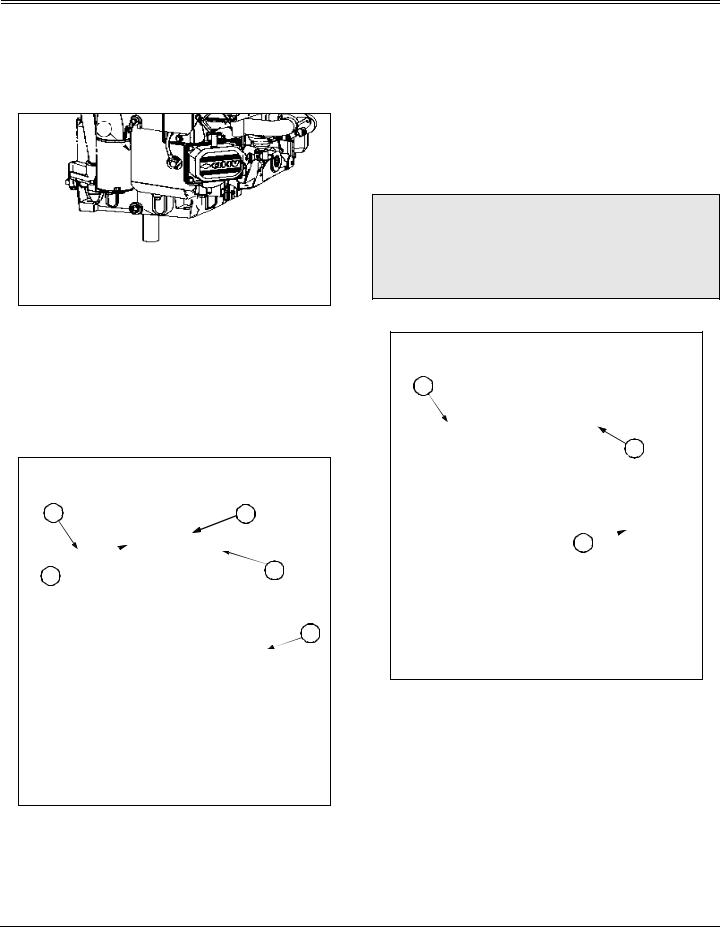
OPERATING MACHINE
Warming and Idling Engine
WARMING ENGINE:
• Run Engine at half speed for 2–3 minutes.
IDLING ENGINE:
A 
M96455
•Engine is air-cooled and needs a large volume of air to keep cool. Keep air intake screen (A) on top of engine clean.
•Avoid unnecessary engine idling.
Stopping Engine
A  E
E
D  C
C
B
1.Push down on foot pedal (A).
2.Move transmission shift lever (B) to N (NEUTRAL) position.
3.Pull PTO lever (C) all the way back to the rearward (OFF) position.
4.Move throttle lever (D) to SLOW (t) position. Let engine run at low throttle a few seconds.
5.Turn key (E) to OFF position.
6.Remove key.
7.LOCK the park brake.
Using Travel Controls
cCAUTION: Avoid injury:
•Before moving forward or rearward, make sure area is clear of bystanders, especially children.
•Disengage mower or attachment before backing up.
TO TRAVEL FORWARD:
B
 C
C
A 
Move shift lever (A) to the right and forward to desired FORWARD speed.
Operating Machine - Page 10
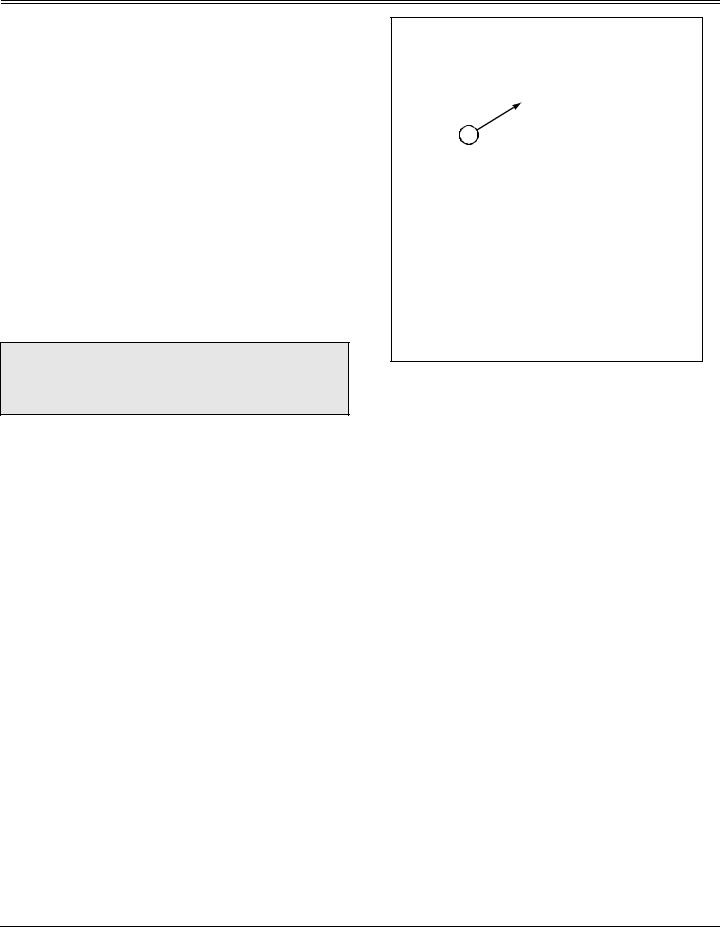
OPERATING MACHINE
TO TRAVEL IN REVERSE:
NOTE: The engine and mower will stop as the shift lever is moved to the R (REVERSE) position with mower engaged.
1.Pull PTO lever (C) all the way back to the rearward (OFF) position.
2.Look behind the vehicle to be sure there are no bystanders nearby.
3.Move shift lever (A) rearward to the R (REVERSE) position.
FOR EMERGENCY STOPPING:
1. Push foot pedal (B) fully to stop machine. Transmission shift lever (A) will automatically return to NEUTRAL.
Using Reverse Implement Option
cCAUTION: Avoid injury. Before moving forward or rearward, make sure area is clear of bystanders, especially children.
NOTE: Operating the mower while backing up is strongly discouraged. The Reverse Implement Option should be used ONLY when operating another attachment or when the operator deems it necessary to reposition the machine with the mower engaged.
1.Stop the machine FORWARD travel with mower engaged.
2.Look behind the vehicle to be sure there are no bystanders.
A
3.Push and hold in the reverse implement switch (A) while:
4.Move the drive lever to the R (REVERSE) position.
NOTE: If the engine and mower stop while repositioning the machine, return mower engagement lever to the OFF position and restart the machine. (See Starting The Engine in this section.) Begin again with Step 2.
5.As the machine begins to move rearward, release the reverse implement switch and reposition the machine.
6.Resume FORWARD travel. The mower should continue operating.
7.Repeat Steps 1 through 5 to reposition the machine again.
Operating Machine - Page 11
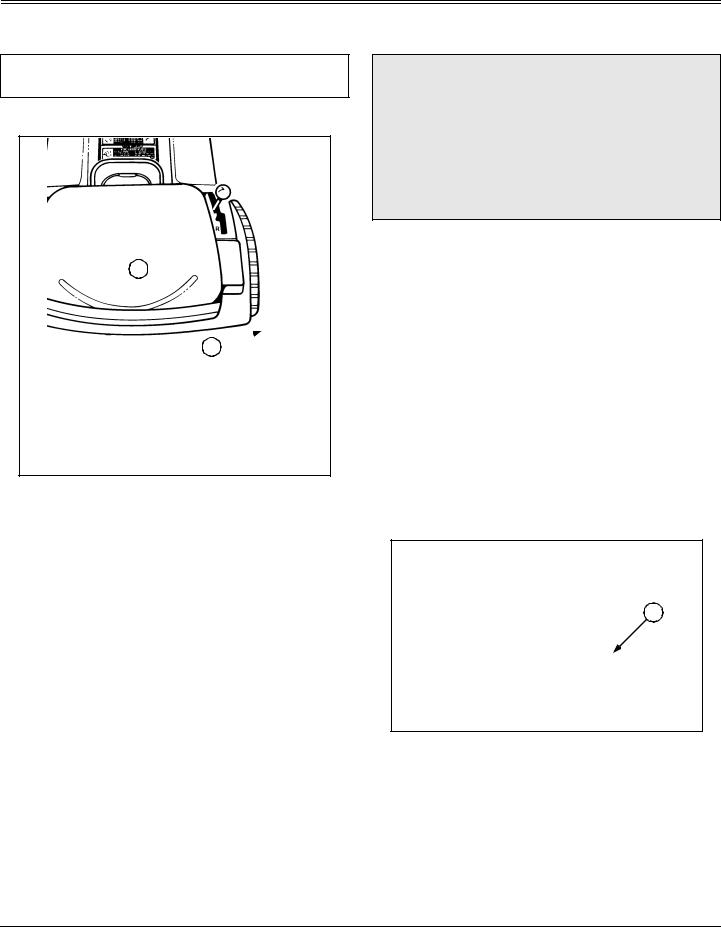
OPERATING MACHINE
Pushing Machine
IMPORTANT: Avoid transmission damage, DO NOT tow machine.
To move machine when engine is STOPPED:
A
B 
1.Unlock the park brake (A).
2.Put transmission shift lever (B) in N (Neutral).
3.Push machine to desired location.
Daily Operating Checklist
•Test safety systems.
•Check tire pressure.
•Check fuel level.
•Check engine oil level.
•Remove grass and debris from machine.
Testing Safety Systems
cCAUTION: Avoid injury. Engine exhaust fumes can cause sickness or death.
If it is necessary to run an engine in an enclosed area, remove the exhaust fumes from the area with an exhaust pipe extension.
If you do not have an exhaust pipe extension, open the doors and get outside air into the area.
Use the following checkout procedure to check for normal operation of machine.
If there is a malfunction during one of these procedures, DO NOT operate machine. (See your Authorized Service Center for service.)
Perform these tests in a clear open area. Keep bystanders away.
NOTE: Your Lawn Tractor is equipped with a ELECTRONIC SAFETY INTERLOCK. Engine will not start unless: PTO lever is DISENGAGED. Brake pedal is depressed OR parking brake is set.
Test 1
1.Operator on seat.
2.Unlock the park brake.
A
3.Pull PTO lever (A) back to DISENGAGE.
4.Try to start engine.
5.Engine MUST NOT start. If engine starts, there is a problem with your safety interlock circuit. (See your Authorized Service Center.)
Operating Machine - Page 12
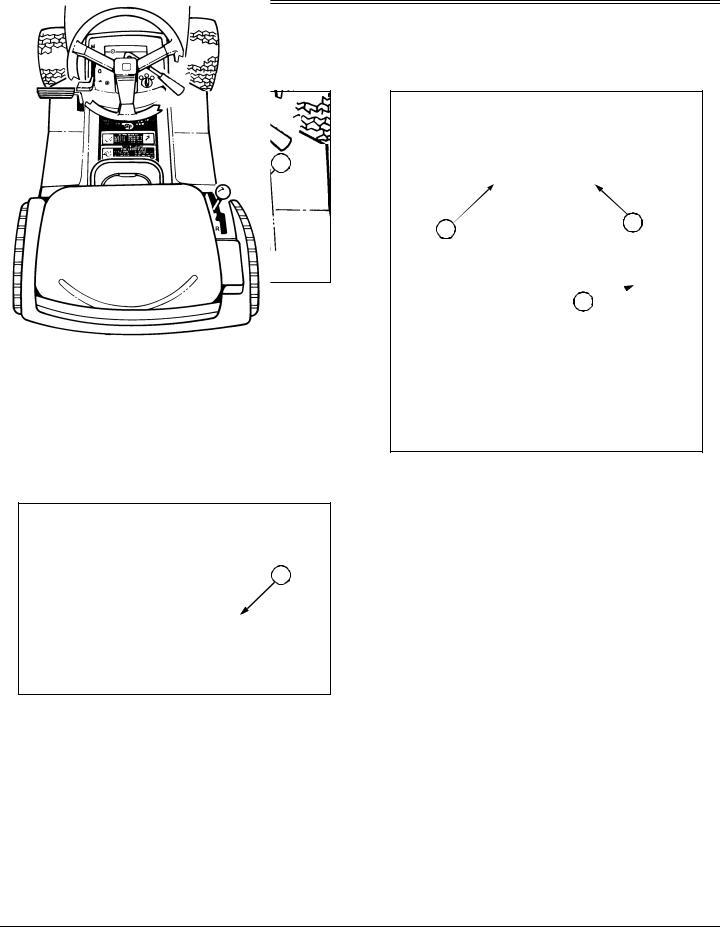
OPERATING MACHINE
Test 2 |
Test 4 |
1.Operator on seat.
2.Lock the park brake.
1.Operator on seat.
2.Push brake pedal down.
A
3.Push PTO lever (A) forward to ENGAGE.
4.Try to start engine.
5.Engine MUST NOT start. If engine starts, there is a problem with your safety interlock circuit. (See your Authorized Service Center.)
Test 3
1.Operator on seat.
2.Lock the park brake.
A
3.Pull PTO lever (A) back to DISENGAGE.
4.Start engine and move throttle lever (B) to HALFSPEED (R) position.
5.Push PTO lever (A) forward to ENGAGE.
6.Move throttle lever to FAST (r) speed position.
7.Raise up off of seat. DO NOT get off tractor.
8.Engine will begin to stop. If engine does not begin to stop, there is a problem with your safety interlock circuit. (See your Authorized Service Center.)
A
C
B 
3.Pull PTO lever (A) back to DISENGAGE.
4.Put transmission shift lever (B) in N (NEUTRAL) position.
5.Start engine and move throttle lever (C) to FAST (r) speed position.
6.Release brake slowly.
7.Raise up off of seat. DO NOT get off tractor.
8.Engine will begin to stop. If engine does not begin to stop, there is a problem with your safety interlock circuit. (See your Authorized Service Center.)
Test 5
1.Operator on seat.
2.Lock the park brake.
Operating Machine - Page 13
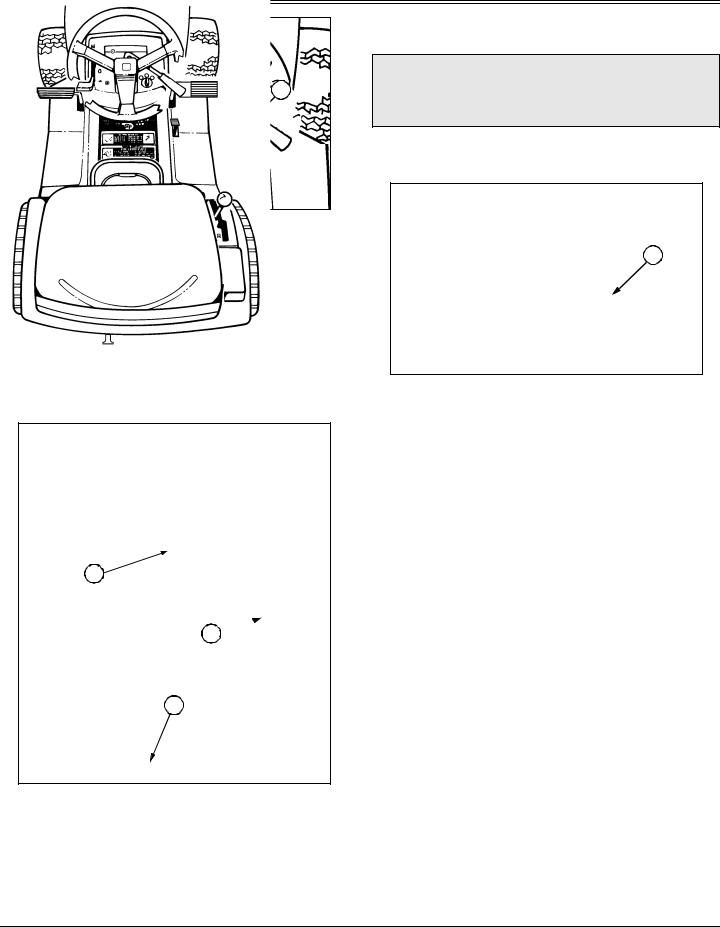
OPERATING MACHINE
B A
3.Pull PTO lever (A) back to DISENGAGE.
4.Start engine and move throttle lever (B) to FAST (r) speed position.
5.Raise up off of seat. DO NOT get off tractor.
6.Engine MUST remain running. If engine does stop, there is a problem with your safety interlock circuit. (See your Authorized Service Center.)
Test 6
A
B 
C
1.Lock the park brake (A).
2.Put transmission shift lever (B) in N (Neutral).
3.Try to push machine manually.
4.Park brake MUST prevent machine from moving. If machine moves, parking brake needs to be adjusted. (See your Authorized Service Center.)
Test 7
cCAUTION: Avoid injury. Before moving rearward, make sure area is clear of bystanders, especially children.
Test Reverse Implement Option:
1. Start engine.
A
2.Push PTO lever (A) forward to ENGAGE.
3.Look behind the vehicle to be sure there are no bystanders.
4.Begin REVERSE travel by moving the transmission shift lever to R (REVERSE) position.
Mower and engine should stop operation. If mower or engine continues to operate as tractor begins travel in REVERSE, do not continue to operate mower. (See your Authorized Service Center for service.)
Avoid Damage to Plastic and Painted Surfaces
•DO NOT wipe plastic parts unless rinsed first. (See Correct Cleaning Care in Service-Miscellaneous section.)
•Insect repellent spray may damage plastic and painted surfaces. Do not spray insect repellent near machine.
•Be careful not to spill fuel on machine. Fuel may damage surface. Wipe up spilled fuel immediately.
Operating Machine - Page 14
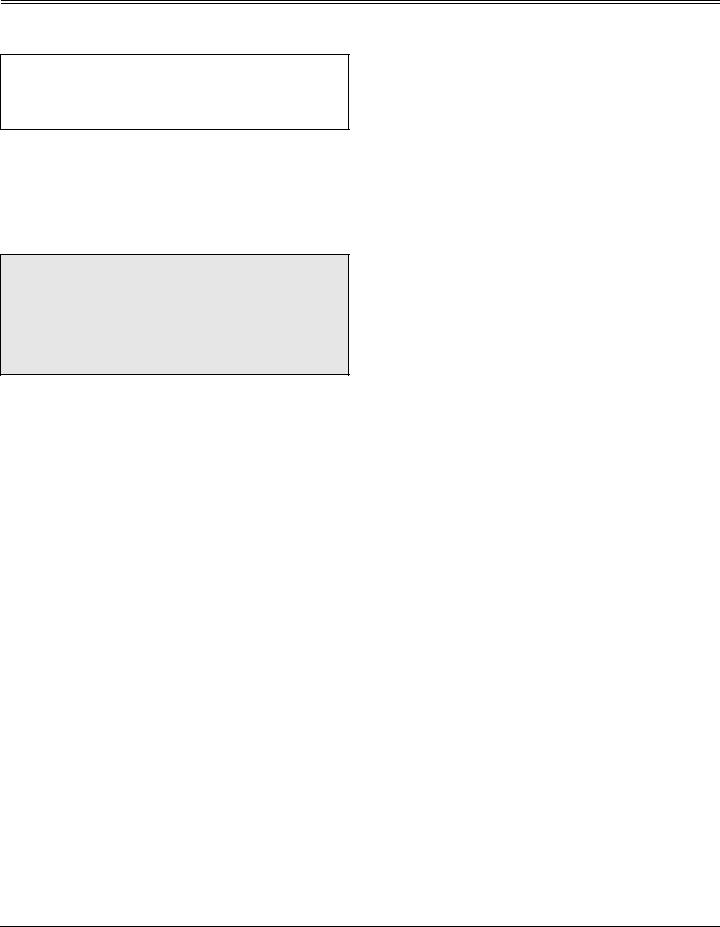
OPERATING MACHINE
Avoid Using Ground Engaging Equipment
IMPORTANT: Avoid machine damage. This tractor is NOT intended for use with ground engaging equipment. Use of such equipment could result in damage to transmission components.
This tractor is not intended for use with ground engaging equipment such as a rear tiller, disk, blade or plow.
Using Front Weights
cCAUTION: Avoid injury. Tractor front wheel weights improve stability in most slope operation. To avoid injury, add front wheel weights for better front-end stability and steering when using a rear mounted attachment.
Install front wheel weights, two required, for better stability and steering control when you use equipment such as the rear-mounted grass bagger or dumpcart.
See your Authorized Service Center for Front Weights.
Remove front wheel weights when not required.
Using Rear Wheel Weights
Use of rear wheel weights is recommended for improved traction when an attachment, such as snowthrower or blade is used.
See your Authorized Service Center for Rear Weights.
Using Tire Chains
Tire chains are recommended for use with snowthrower and, under certain conditions, the front blade.
See your Authorized Service Center for Tire Chains.
Transporting
Do not tow machine.
Use a heavy-duty trailer to transport your machine.
Raise mower deck to highest position when transporting to trailer.
Disengage PTO.
Drive forward onto trailer.
Lower mower or any attachment to trailer deck.
LOCK park brake.
Be sure trailer has all the necessary lights and signs required by law.
Fasten machine to trailer with heavy-duty straps, chains, or cables. Both front and rear straps must be directed down and outward from tractor.
Operating Machine - Page 15

|
OPERATING MOWER |
|
|
Operate Mower Safely |
• DISENGAGE PTO lever to stop mower blades when you |
|
are not using mower. |
• In addition to reading your Operator’s Manual, view your Mowing Safety Video.
Check Ground Conditions
•Clear mowing area of objects that might be thrown. Keep people and pets out of mowing area.
•Study mowing area. Set up safe mowing pattern. Do not mow under conditions where traction or stability is doubtful.
•First, test drive area with PTO lever DISENGAGED and mower lowered. Slow down when you travel over rough ground.
Avoid Injury From Contacting Blades
Using Lift Lever to Raise and Lower Mower
A
B
1.Push down on lift lever (A) slightly and hold locking lever
(B) down with thumb.
2.Move lift lever (A) DOWN to LOWER mower or UP to RAISE mower.
3.Release locking lever lock (B) to keep lift lever (A) in position.
Adjusting Cutting Height
Cutting height can be adjusted from 38 – 102 mm (1-1/2 – 4 in).
Check tractor tire pressure. (See Checking Tire Pressure in Service Miscellaneous section.)
To adjust cutting height:
Before you dismount to unplug or adjust mower:
•DISENGAGE PTO lever to stop mower blades.
•STOP the engine.
•LOCK the park brake.
•Remove key.
•Wait for mower blades to STOP.
•Keep hands, feet and clothing away from mower deck when engine is running.
A
B
1.Push down on lift lever (A) slightly and hold locking lever
(B) down with thumb.
2.Move lift lever (A) to desired cutting height.
3.Release locking lever (B) to keep lift lever (A) in position.
4.Adjust gage wheels to match cut height desired. (See Adjusting Mower Gage Wheels below.)
Operating Mower - Page 16

OPERATING MOWER
Adjusting Mower Gage Wheels |
Adjusting Mower Level (Side-to-Side) |
cCAUTION: Avoid injury, before you adjust gage wheels: STOP engine, remove key, and wait for blades to STOP.
IMPORTANT: Avoid machine damage. Mower gage wheels must not ride on ground to support mower weight. Adjust gage wheels each time you change cutting height.
1.Check tractor tire pressure. Inflate tires to the correct pressure. (See Checking Tire Pressure in Service - Miscellaneous section.)
2.Raise mower lift lever to TRANSPORT (upper) position and adjust cutting height. (See Adjusting Cutting Height in this section.)
D |
|
C |
A |
|
|
|
B |
|
M88571 |
3.Remove bolt (A), bushing (B), washer (C), and nut (D).
4.Move lift lever down to desired MOWING position.
5.Move mower gage wheels, one on each side, to one of four holes for desired position. On 46-Inch Mower Deck, move front and rear gage wheels.
6.Bottom of gage wheels should be approximately 6-13 mm (1/4-1/2 in) from the ground when properly adjusted.
7.Install bolt and tighten with nut.
cCAUTION: Avoid injury, before you adjust mower: STOP engine, remove key, and wait for blades to STOP.
Be careful, sharp edges on mower blades. Always wear gloves when handling mower blades.
NOTE: A deck leveling gauge (Part Number TY15272) to aid in deck leveling may be obtained through your local Authorized Service Center at a nominal cost.
1.Park tractor on a hard, level surface.
2.Stop engine and remove key.
3.CHECK: Tire pressures must be correct. (See Checking Tire Pressure in Service – Miscellaneous section.)
4.Adjust cutting height to middle position.
A A
5. Turn left blade parallel to tractor axle. Hold drive belt and turn right blade parallel to axle.
A 
M40161
6. Measure from each outside blade tip (A) to the level surface. The difference between measurements must not be more than 3 mm (1/8 in).
Operating Mower - Page 17
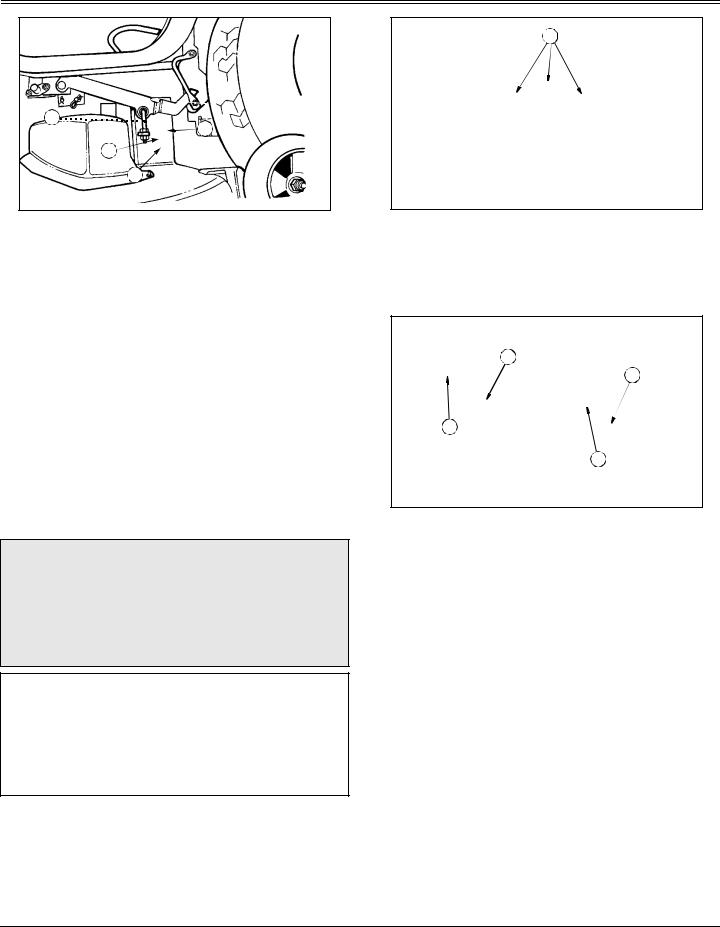
OPERATING MOWER
C 








B 
D 
E
7.Loosen top clamping nut (C) facing inside of mower, on left hand side J-bolt (B), approximately one turn.
8.Loosen upper adjusting nut (D).
9.Raise or lower left side of deck.
•To raise: Turn lower adjusting nut (E) towards rear of tractor.
•To lower: Turn lower adjusting nut (E) towards front of tractor.
10.Tighten upper adjusting nut.
11.Tighten clamping nut.
12.Check side-to-side measurements and readjust if necessary.
Adjusting Mower Level (Front-to-Rear)
cCAUTION: Avoid injury, before you adjust mower: STOP engine, remove key, and wait for blades to STOP.
Be careful, sharp edges on mower blades. Always wear gloves when handling mower blades.
IMPORTANT: Avoid machine damage. Make sure each front draft rod is equally tensioned. The installed rods should exhibit identical amounts of movement between left and right rods. If one rod moves more freely than the other, the adjustment nut should be tightened until the movement of the assembly matches that of the other side.
1.Park tractor on a hard, level surface.
2.Stop engine and remove key.
3.CHECK: Tire pressure must be correct. (See Checking Tire Pressure in Service – Miscellaneous section.)
A 
4.Turn blades so front blade tips (A) point straight forward.
5.Measure from the front of each blade tip to the level surface. The front blade tips must be 6–9 mm
(1/4–3/8 in.) lower than rear blade tips or blades will cut grass twice and grass tips will turn brown.
C 
C 
B 
B 
6.Turn nuts (B) on front draft rods (C) equally until adjustment is correct. Turn nut clockwise to RAISE front of mower deck or counterclockwise to LOWER front of mower deck.
7.Check front-to-rear deck measurements and readjust if necessary.
Operating Mower - Page 18
